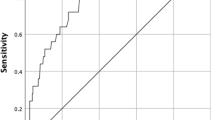Abstract
This study examined the utility of three personality typologies in predicting global functioning in a non-clinic sample of adolescents. Participants were 140 students from middle class suburban public high schools (74 girls; mean age = 16.0 ± 1.2; 70.7% Caucasian, 11.4% African American, 7.1% Asian, 7.1% Hispanic, and 3.6% other) who completed psychometrically sound standardized measures of personality. They were combined into three four quadrant personality typologies. Global Assessment of Functioning (GAF) ratings were based on clinical interviews utilizing DSM criteria and were obtained by raters blind to self-report results. All three systems overlapped modestly but significantly. Each model detected significant GAF differences among quadrants. There was no gender difference in representation among the quadrants of the three systems. Results suggest that compared with unitary dimensions of personality, typologies concurrently utilizing two dimensions of personality functioning better capture individual differences on a complex psychological construct such as global functioning. Further research is warranted to examine the utility of these typological systems in predicting global functioning across a variety of clinical and nonclinical adolescent populations, and to determine how other aspects of global functioning may influence or interact with personality typologies.
Similar content being viewed by others
References
Digman JM: Personality structure: Emergence of the five factor model. Ann Rev Psychology 41: 417-440, 1990.
Jang KL, McCrae RR, Angleitner AI, Riemann RI, Livesley WJ: Heritability of facet-level traits in a cross-cultural twin study: Support for a hierarchical model of personality. J Pers Soc Psychol 74: 1556-1565, 1998.
McCrae RR, Costa PT Jr: Validation of the five factor model of personality across instruments and observers. J Pers Soc Psychol 52: 81-90, 1987.
McCrae RR, Costa PT Jr: Personality trait structure as a human universal. Am Psychol 52: 509-516, 1997.
Ford DH: Humans as self-constructing living systems. Hillsdale, NJ: Lawrence Erlbaum, 1987.
Royce JR, Powell A: Theory of personality and individual differences: Factors, systems, and processes. Englewood Cliffs,NJ: Prentice-Hall, 1983.
Weinberger DA, Schwartz GE: Distress and restraint as superordinate dimensions of self-reported adjustment: A typological perspective. J Pers 58(2): 381-417, 1990.
Steiner H, Erickson SJ, Hernandez N, Pavelski R: Coping as correlates of health behavior in high school students. J Adolesc Health, 30: 326-335, 2002.
Crowne DP, Marlowe D: A new scale of social desirability independent of psychopathology. J Consult Clin Psychol 24: 349-354, 1960.
Crowne, D.P. & Marlowe, D: The approval motive: Studies in evaluative dependence. New York: Wiley, 1964.
Spielberger CD: Manual for the State-Trait Anxiety Inventory Form Y. Palo Alto,CA: Consulting Psychologists Press, 1983.
Weinberger DA, Schwartz GE, Davidson RJ: Low-anxious, high-anxious, and repressive coping styles: Psychometric patterns and behavioral and physiological responses to stress. J Abn Psychology 88: 369-380, 1979.
Steiner H, Canning E: Adaptive styles in adolescents with psychosomatic illness. Acta Paedopsychiatr, 56:255-259, 1994.
Weinberger DA: Distress and self-restraint as measures of adjustment across the life span: Confirmatory factor analyses in clinical and non-clinical samples. Psychol Assess 9: 132-135, 1997.
Eysenck HJ, Eysenck MW: Personality and individual differences: A natural science approach. New York: Plenum Press, 1985.
Tellegen A: Structures of mood and personality and their relevance to assessing anxiety, with an emphasis on self-report. In: Anxiety and the anxiety disorders (pp. 681-706), eds. Tuma AH, Maser J. Hillsdale, NJ: Lawrence Erlbaum, 1985.
Eysenck SB, Eysenck HJ, Barrett P: A revised version of the psychoticism scale. Pers Ind Difference 6: 21-29, 1985.
Steiner H, Feldman SS: Two approaches to the measurement of adaptive style: A comparison of normal, psychosomatically ill, and delinquent adolescents. J Am Acad Child Adolesc Psychiatry 34: 180-190, 1995.
Steiner H, Cauffman E, Duxbury E: Personality traits in juvenile delinquents: Relation to criminal behavior and recidivism. J Am Acad Child Adolesc Psychiatry 38(3): 256-262, 1999.
Vaillant GE: Adaptation to life.Boston: Little, Brown, & Company, 1977.
Bond M., Gardner S., Christian J., Sigal C: Empirical study of self-related defense styles. Arch Gen Psychiatry 40: 333-338, 1983.
Erickson SJ, Steiner H, Feldman SS: Defense reactions and coping strategies in normal adolescents. Child Psychiatry Hum Dev 28(1): 45-56, 1997.
Feldman SS, Araujo K, Steiner H: Defense mechanisms in adolescents as a function of age, gender and mental health status. J Am Acad Child Adolesc Psychiatry, 35: 1344-1354, 1996.
Steiner H, Araujo K, Koopman C:The Response Evaluation Measure: A new instrument for the assessment of defenses. Am J Psychiatry, 158 (3): 467-473, 2001.
American Psychological Association:Diagnostic and statistical manual of mental disorders, third edition, revised. Washington, DC: American Psychiatric Press, 1987.
American Psychological Association: Diagnostic and statistical manual of mental disorders, fourth edition. Washington, DC: American Psychiatric Press, 1994.
Endicott J, Spitzer R, Fleiss J, Cohen J: The global assessment scale. Arch Gen Psychiatry 33: 766-771, 1976.
Lane RD, Merikangas KR, Schwartz GE, Huang SS: Inverse relationship between defensiveness and lifetime prevalence of psychiatric disorder. American Journal of Psychiatry 147(5): 573-578, 1990.
Author information
Authors and Affiliations
Corresponding author
Rights and permissions
About this article
Cite this article
Erickson, S.J., Steiner, H. Predicting Adolescents' Global Functioning from Personality Typologies. Child Psychiatry Hum Dev 34, 63–80 (2003). https://doi.org/10.1023/A:1025354009764
Issue Date:
DOI: https://doi.org/10.1023/A:1025354009764



